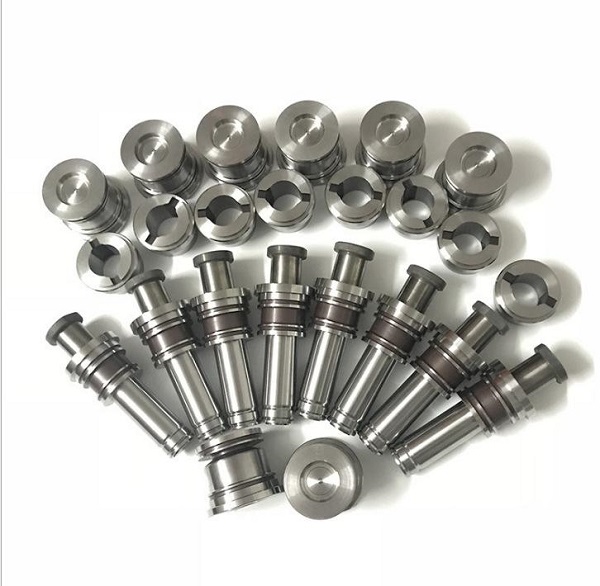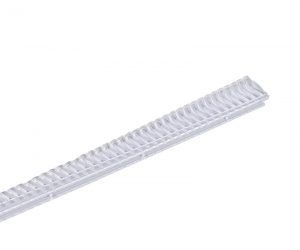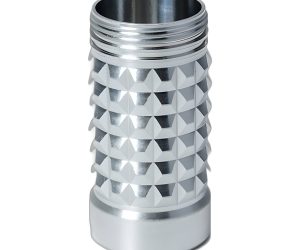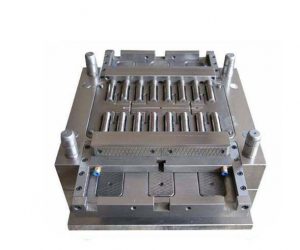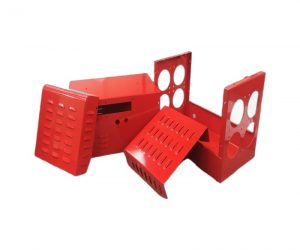Introduction
Definition and Significance of High Volume Production Machining
High volume production machining refers to the process of manufacturing a large number of identical parts or products with high precision and efficiency. It plays a crucial role in the manufacturing industry, especially for manufacturers aiming to meet the high - demand markets.
In today's global economy, the ability to produce goods in large quantities is essential for several reasons. Firstly, it allows manufacturers to take advantage of economies of scale. As the production volume increases, the cost per unit typically decreases. For example, if a manufacturer produces 100 units of a product, the cost of setting up the production line, purchasing raw materials in small quantities, and the labor involved in each unit might result in a relatively high cost per unit. However, when the production volume jumps to 10,000 units, the setup cost is spread over a much larger number of products, and the bulk purchase of raw materials often comes with significant discounts. This leads to a substantial reduction in the cost per unit, making the products more price - competitive in the market.
Secondly, high volume production machining enables manufacturers to meet the growing demands of consumers. In industries such as automotive, electronics, and consumer goods, the market demand for products is often in the millions. Without efficient high volume production capabilities, manufacturers would struggle to keep up with the market's appetite, potentially losing out on significant business opportunities.
Moreover, it contributes to the overall growth and development of the manufacturing sector. By streamlining production processes and achieving high - volume outputs, manufacturers can increase their revenue and invest in research and development, further improving their products and production methods. This, in turn, drives innovation and competitiveness within the industry. As we delve deeper into this guide, we will explore the various aspects of high volume production machining, from the technologies involved to the challenges and solutions manufacturers face.
Key Aspects of High Volume Production Machining
Equipment Selection
Selecting the right equipment is fundamental for high volume production machining. CNC (Computer Numerical Control) machining centers are popular choices. These machines can perform multiple operations such as milling, drilling, and tapping in a single setup. For example, a HAAS VF-2 vertical machining center can handle a wide range of parts with high precision. It has a spindle speed of up to 12,000 RPM, which allows for efficient material removal. The high - speed spindle enables faster cutting, reducing the overall machining time per part.
Automated lathes are another crucial type of equipment. They are excellent for producing cylindrical parts. The Citizen Cincom L20 automatic lathe, for instance, can achieve high - speed and high - precision turning operations. It features multi - spindle technology, which allows for simultaneous machining of multiple parts or multiple operations on a single part. This significantly increases the production rate. When choosing equipment, manufacturers should consider factors like the production volume requirements, part complexity, and precision tolerances. If the parts have complex geometries, a more advanced and versatile CNC machining center might be necessary. However, for simple, high - volume cylindrical parts, an automated lathe could be the more cost - effective and efficient option.
Material Considerations
The choice of materials has a profound impact on high volume production machining. Metals like aluminum are highly favored in many industries such as aerospace and automotive. Aluminum has a low density, which makes it ideal for applications where weight reduction is crucial. It also has good machinability. During machining, aluminum can be cut relatively easily, allowing for high - speed machining operations. For example, in the production of aircraft components, aluminum alloys are often used. They can be machined into complex shapes with tight tolerances using high - speed CNC milling processes.
On the other hand, steel offers high strength and durability. Carbon steel and alloy steel are commonly used in the manufacturing of machinery parts. However, steel is generally more difficult to machine compared to aluminum due to its higher hardness. Specialized cutting tools and optimized machining parameters are required. For instance, when machining high - strength alloy steel, carbide - tipped cutting tools are often used, and lower cutting speeds may be necessary to prevent tool wear and ensure good surface finish.
Plastics are also widely used in high volume production, especially in the consumer goods industry. Plastics like acrylic and polyethylene are easy to machine. They can be processed using techniques such as injection molding, which is highly suitable for high - volume production. Injection molding allows for the rapid production of complex - shaped plastic parts with high precision. For example, the production of plastic toy parts or household product components often relies on injection molding of various plastic materials. The material's melting point, viscosity, and shrinkage properties need to be carefully considered during the machining process. Low - viscosity plastics are easier to inject into molds, while materials with high shrinkage may require additional post - processing to meet dimensional accuracy requirements.
Process Optimization
Optimizing the machining process is essential to achieve high - efficiency and high - quality high volume production. (Reasonable arrangement of processes) is a key aspect. For example, in the machining of a complex mechanical part, the rough machining operations should be carried out first to remove a large amount of material quickly. This can be followed by semi - finishing and then finishing operations to achieve the required precision and surface finish. By separating these operations in a logical order, the tool life can be extended, and the overall machining time can be reduced.
(Optimizing the tool path) is another important factor. Modern CAD/CAM (Computer - Aided Design/Computer - Aided Manufacturing) software can generate highly optimized tool paths. These paths are designed to minimize the distance the tool travels, reduce unnecessary cutting movements, and ensure uniform cutting forces. For example, instead of using a simple zig - zag tool path, the software can generate a more complex and efficient path that follows the contour of the part more closely. This not only saves machining time but also improves the surface quality of the finished part. Additionally, proper tool selection and tool replacement strategies are crucial. High - quality cutting tools with appropriate coatings can withstand the high - volume machining process better, reducing the frequency of tool changes. Regular tool maintenance and timely replacement based on tool wear monitoring can prevent unexpected tool failures and ensure continuous production.
Yigu Technology's Perspective
As a non - standard plastic and metal products custom supplier, Yigu Technology deeply understands the significance of high volume production machining. With a team of highly skilled engineers and advanced equipment, we are well - positioned to meet the high - volume production needs of our clients.
Our state - of - the - art machinery, including high - precision CNC machines, ensures that we can produce parts with tight tolerances even in large quantities. We also have a rigorous quality control system in place. From the selection of raw materials to the final inspection of the finished products, every step is closely monitored. This ensures that each part leaving our factory meets the highest quality standards.
Moreover, our experienced team can provide customized solutions for different production requirements. Whether it's complex metal components or intricate plastic parts, we have the expertise to optimize the production process, reduce costs, and increase efficiency. We believe that by combining our technical capabilities with a customer - centric approach, we can help manufacturers achieve success in high volume production machining.
FAQ
What are the most suitable materials for high volume production machining?
Common materials suitable for high - volume production machining include:
- Aluminum alloys: With low density and good machinability, they are widely used in the aerospace industry for aircraft components, and in the automotive industry for engine parts and lightweight body components.
- Stainless steel: Known for its high corrosion - resistance and strength, it is suitable for applications in the medical device industry for surgical instruments and in the food processing industry for equipment parts due to its hygiene and durability.
- Engineering plastics like polycarbonate and acetal: Polycarbonate has high impact - resistance and is often used in the production of electronic device housings, such as mobile phone cases. Acetal has excellent dimensional stability and is suitable for precision parts in mechanical devices, like small gears.
How to ensure the quality of products in high volume production machining?
To ensure product quality in high - volume production machining:
- Equipment precision: Use high - precision equipment and regularly calibrate it. For example, CNC machines should be calibrated at least once a month to ensure accurate movement and dimensional accuracy of the machined parts.
- Process control: Optimize machining processes, including choosing the right cutting parameters such as appropriate cutting speed, feed rate, and depth of cut. For instance, when machining steel, a lower cutting speed may be required to prevent overheating and maintain surface finish.
- Quality inspection: Implement a multi - stage inspection system. Inspect raw materials before production, conduct in - process inspections during machining, and perform final inspections on finished products. Use inspection tools like coordinate measuring machines (CMMs) to measure the dimensions of parts accurately.
What are the common problems in high volume production machining and how to solve them?
Common problems and solutions in high - volume production machining are as follows:
- Equipment failure: Regularly maintain equipment through preventive maintenance, such as daily cleaning, weekly lubrication, and monthly component checks. In case of a breakdown, have a backup equipment plan or a rapid repair team to minimize production downtime.
- Quality fluctuations: This may be caused by inconsistent raw materials, tool wear, or process variations. To solve this, strictly control raw material quality, monitor and replace tools in a timely manner according to their wear conditions, and continuously optimize and stabilize the production process.
